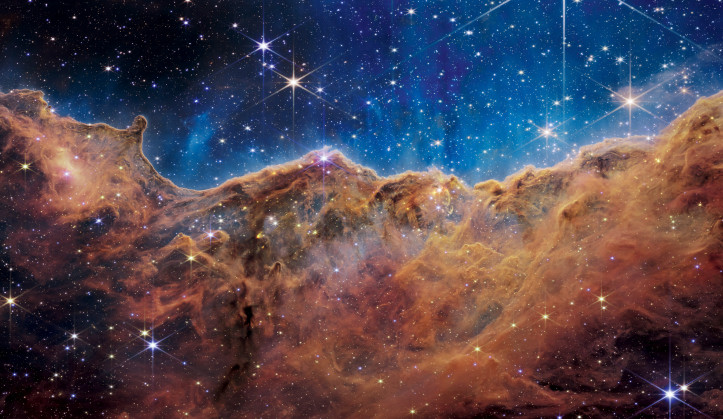
Youth and Dust A cloud—only not the soft, gentle, and fluffy kind, but dangerous and unsettling, similar to a mountain ridge exposed to the ruthless forces of nature. Its wild, rough shape is the result of massive ultraviolet radiation emitted by young, hot stars of enormous sizes. They can’t be seen in the photo, they’re out of shot. The radiation isn’t there either, only its effect—it has expelled dust and gas from the top, compressing, rumpling, and creasing the cloud below.

When masses of dust and gas crash into each other and mix together, they instigate and hasten—and sometimes slow down and eliminate—the birth of new stars. The photo is a portrait of a tempestuous, wild cosmic youth. Some of the stars glittering within the cloud have just come into being, others are still being born. Everything is new, everything is sudden; in the process of becoming and taking shape. Planets might already be there, far apart, but there’s still much in store for them: orbit changes, collisions, bombardments, intense volcanic processes. The final shape of these worlds is yet to emerge from the ocean of possibility. In its widest place, the distance from the bottom of the shot to the edge of the cloud is about seven light years, which means that it would take seven years for light to travel the distance. Against such enormity, a human being is as tiny as a water particle in the Pacific Ocean. Still, this particle (not one of them, of course, but many) managed to create this magnificent image.








